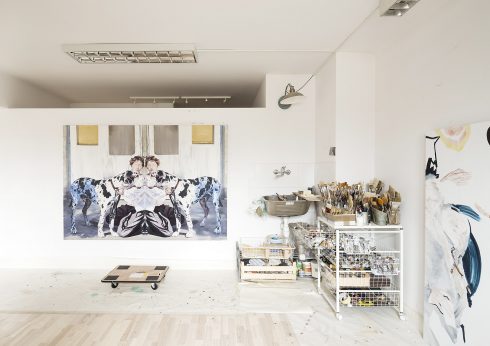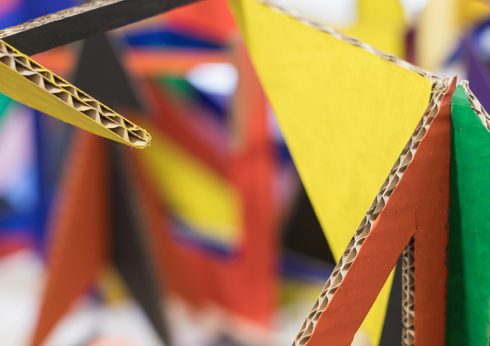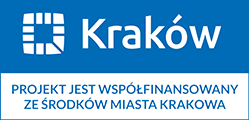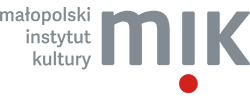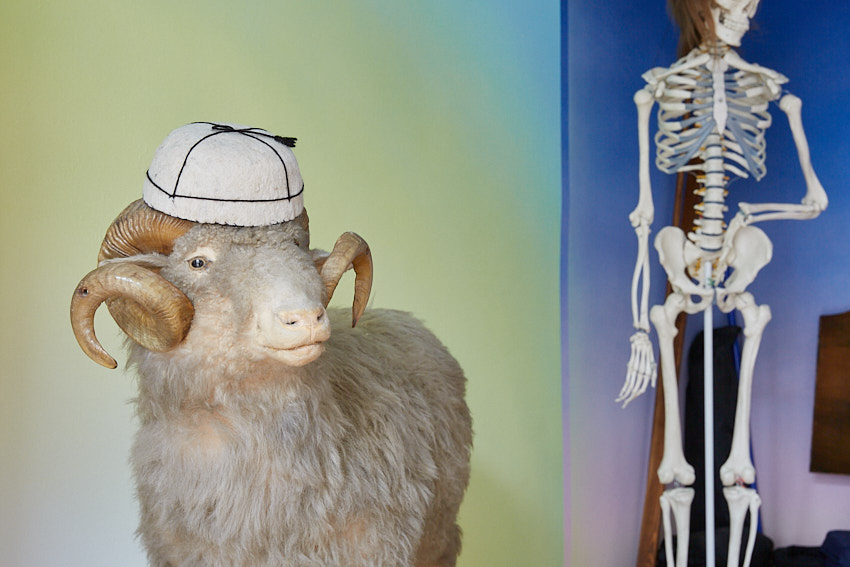
Irena Kalicka’s studio
Anna Stankiewicz Małopolski Instytut Kultury w Krakowie Irena Kalicka interviewed by Martyna Nowicka M.N.: How is it (...)Irena Kalicka interviewed by Martyna Nowicka
M.N.: How is it to work from home? The awareness that the studio is just behind the wall, that you can leave the kitchen and immediately be at work – is it something that mobilises you or the other way round?
I.K.: I have always worked at home. I’ve never had the luxury of a separate studio. I used to be a guest at Janek’s (Janek Płatek, a painter and Irena Kalicka’s partner) when he happened to have a studio outside of home, but to tell you the truth, most of my photographs originated at home or at our friends’ places. Every time I wanted to take photographs it meant rearranging the furniture, reorganising the space, and moving some things around. It is only now that I finally have a separate room.
M.N.: Do you work during some specific hours here?
I.K.: I used to work at night, today it’s by day and at times that would have been impossible to be my waking hours before: from 8am to 1pm. And that gives the photographs a different character as I no longer use flash but daylight. Just like with a digital and analogue camera: it might only be a technical question, but it has a gigantic impact on the final effect.
M.N.: Why didn’t you have a studio before?
I.K.: I certainly couldn’t afford to rent a separate space at that point, and moreover I’ve always managed to fit my work into my home, do something at my friends’ and parents’ places, and some photos outdoors. Yet there was more to it than that. Actually, from the time of Fototeatrzyk domowy / Phototheatre my work has been related to home. I started from highly intimate circumstances: I photographed people and their relationships and home was a natural space for those intimate matters. It’s hard to part with it. I think that if tomorrow somebody granted me access to a professional studio with all the lamps, I’d find it quite disconcerting. The amateur approach gives me a sense of freedom – and not only for me but also for my modelling friends.
M.N.: Is this your first studio?
I.K.: Yes! I’ve never thought about it this way, but this is total comfort. I share it with Janek, who paints here. We usually work shifts: either him or me. Still, I think of the times when those scenes took place in my bedroom with a big dose of sentimentality. Is so happens that the time when we have had this first studio came after the pandemic and when we already have Gucio, so much has changed. It is no longer natural to have friends visiting us regularly, sitting around, drinking, talking, and photographs being made. Earlier, we were together all the time.
M.N.: It’s taken us a while to arrange this interview. When I called you during the holidays I heard that you were excited about this new space: the location and the potential.
I.K.: Yes, but this year is also very unique: a hard-wearing sinusoidal curve. Moreover, and what is important, I’m returning to work after a two-year break, the longest in my life.
M.N.: Was that break connected to your baby?
I.K.: It was. Gucio was ill all the time at first, so I felt that weeks were passing, then months, half a year, and I am still sitting with a sick child. Six months after Gucio was born I had my individual exhibition at the Bunkier Sztuki – Dożynki / Harvest Festival. It felt I was biting off more than I could chew. I found it very difficult. Perhaps to an outside observer it looked like I was coping but it was horrible contortion, tiredness, and frustration. I remember my friends’ surprise and admiration that I did it, but it was horrible.
M.N.: I don’t want to move into the trap of asking an artist about family and home, but how do you cope with sharing home and the studio?
I.K.: But my work is hard to separate from that! Gucio, Janek, home, studio – they are all interconnected. Janek and I not only share the studio but also work together on commercial projects. Moreover, we help each other at work. There are more difficult moments, sure, but taking into consideration how much time we spend together I think we come out of it unscathed.
M.N.: However, it is not Janek or Gucio but Parówka (hot dog) the Cat who features most often in your photographs.
I.K.: Yes. I even started to entertain the thought that perhaps the unifying element for the cycle I’m now working on should not be the murals painted for this purpose, but perhaps Parówka the Cat. The cat immediately knows when I am working on artistic projects and when on commercial projects. If we are doing our own things he comes into the shot and sits in the middle of it, and if we are doing something else he leaves, yawning ostentatiously.
It is because of Parówka the Cat that I recently decided to make a concession and show a photograph I took with a digital camera, which means it stands out from the majority of my work. I hate that visual quality of digital images. The lion’s share of my works are still created on analogue cameras and media, but it just so happened that I had the digital one in hand when Parówka was yawning.
M.N.: You said you hate that visual quality?
I.K.: To me the difference in the image is gigantic. I see that the image is flat, that it has no depth of focus, that the black is too black. Those small things click together into a whole that I find extremely different. Although there are also downsides to taking photos on a Hasselblad: it is horribly expensive, you need to develop them, scan them in super-high resolution, and then process them in Photoshop, and that obviously is a major problem when I’m in a hurry, which means almost always when I work on the photos. Moreover, using an analogue camera ties me to the entire world of photographic equipment that is at times chauvinistic.
M.N.: A new studio, new subjects, new hours of work. Has anything else changed?
I.K.: Yes! I am far more self-critical today: I look at early projects and think that now I would not show those photographs. But there are also downsides to this perfectionism – I take radical intuitive decisions less frequently, which, after all. have their value too. I have highly fine-tuned and staged photographs in the cycle am now working on, but I’d like to bring some air into it, explode it from the outside. In the case of Fototeatrzyk domowy / Phototheatre and Co się stało to się nie odstanie / What Happened will not Unhappen, it is sometimes hard to say whether it took a year or a night to take those photographs, as the cycles are highly coherent. And now I feel the need to experiment with composition and forms, but also with juxtaposing photographs within a series.
